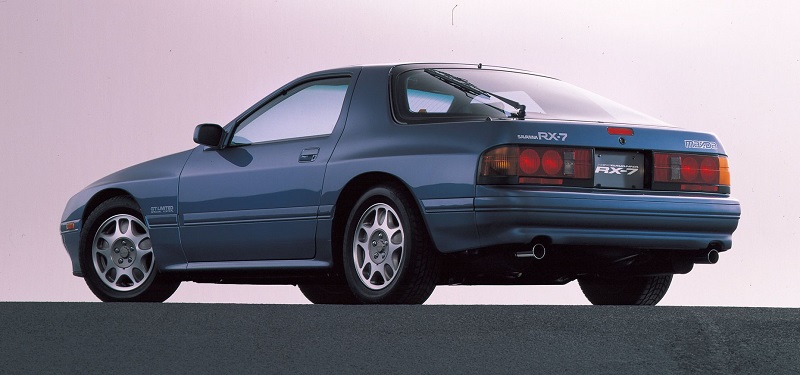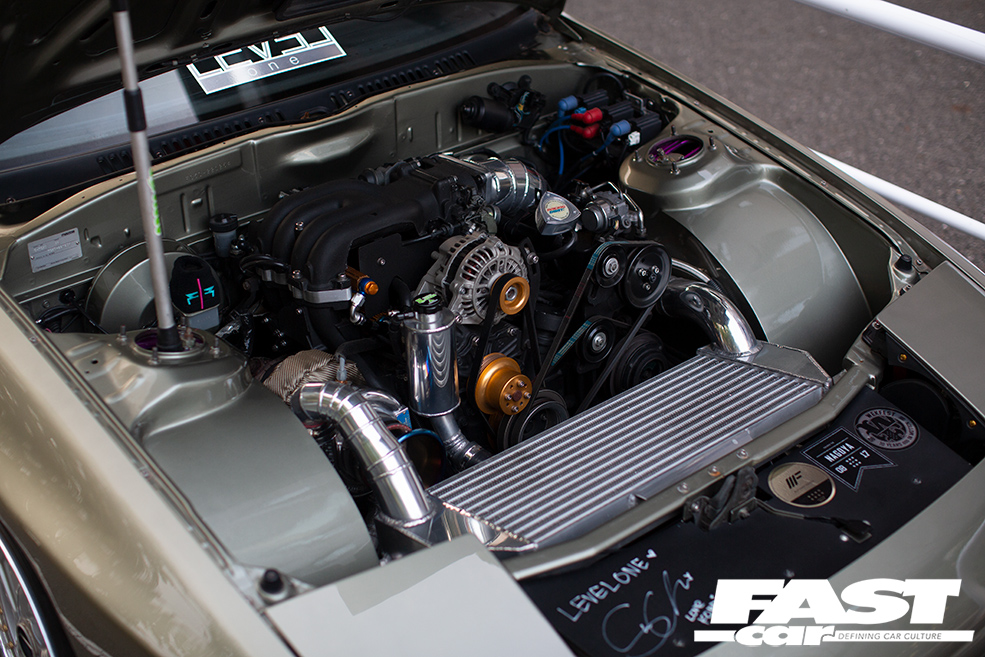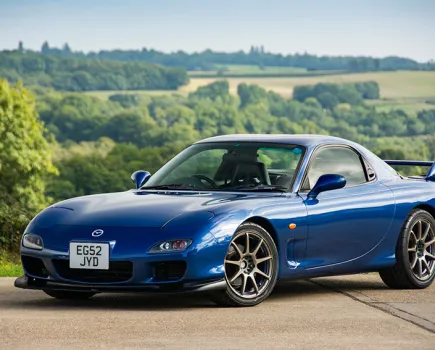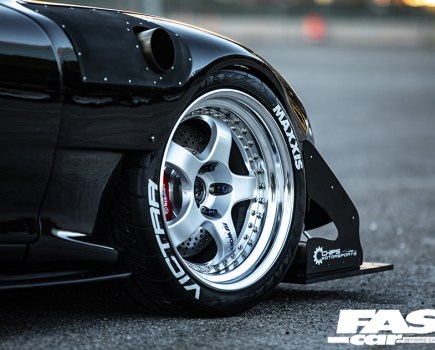Rotary wankel engines are considered to be a bit of a forbidden fruit, but if you’re feeling brave and fancy a Mazda RX-7 FC, here’s what you need to watch out for.
Mazda RX-7 FC History
The second-gen Mazda RX-7, known as the FC, first came to market in 1985 before bowing out seven years later. By Mazda’s own admission, contemporary Porsches played a big role in the inspiration for Akio Uchiyama’s design; tailoring it specifically towards the American market.
Its predecessor was a resounding success, selling nearly half a million units despite its unusual powertrain. For the second iteration, Mazda saw no need to replace the 1.3-litre twin-rotor motor. In fact the brand would go on to be synonymous with the technology for another two decades.
There were a handful of alterations made to the power unit between generations of RX-7 though. In the FC, the normally aspirated version came equipped with a new variable intake system. However, the biggest change came a year after the car’s debut. In 1986, a turbocharged 13B-DEI unit lifted output from 150hp to around 180hp, and inflated again for the facelift in 1989. This included a revised twin-scroll turbo and increased compression ratio. This final evolution of the car was good for 200hp. It made it roughly a third more powerful than the original FC concept.
A year prior to that, a convertible version of the second-gen RX-7 was also introduced, referred to as the FC3C. By comparison, these are much rarer. They make up for less than a tenth of all FC RX-7s that ever rolled off the production line.
Special Edition FC RX-7 Variants
The FC’s lifespan was punctuated by a couple of coupe-based special editions that are also worthy of note. The 10th Anniversary edition cars mark a decade since the debut of the original RX-7 SA22. They are easily identifiable by their Crystal White bodywork and matching wheel rims. Only 1500 were ever made, but from a mechanical perspective, there’s nothing to separate the anniversary models from a regular 180hp turbo car.
A bit more thought did go into the GTUs special edition though. Scarcer than the 10th Anniversary model, the GTUs was kept down to just 1100 units. It was designed to celebrate Mazda’s successes in the American IMSA sports car championship. Using the facelifted base car as a starting canvas, Mazda reverted back to a manual window crank and deleted the rear wiper. They also added the suspension usually found on the turbocharged variant; as well as upgraded brakes, speed-sensitive power steering, and subtly revised front aero. So, what you ended up with was a slightly rawer, but slightly more athletic RX-7.
In general though, the FC RX-7 is the least sporty of the three RX-7 generations. It’s more of a cruiser with some sporting personality sprinkled on top. That said, after a bit of fettling, the Mazda RX-7 FC can make for a rewarding driver’s car.
Mazda RX-7 FC Top 5 common problems
- Broken apex seals
- Low compression rate
- Faulty interior electrics
- Abused rear differential
- Faded/peeling paintwork, or rust
Mazda RX-7 FC buyer’s guide
Engine
When talking about rotary-engined cars, the first thing to check over has to be the power unit. Don’t get it twisted though – these engines aren’t inherently self-destructive. They just need strict, regular maintenance to keep that triangular rotor spinning healthily.
Rotary wankel engines chug through oil like nothing else. If an owner doesn’t keep on top of that, the results are just as catastrophic as they would be if a normal engine was left to run dry. Inexperienced, unaware, or simply lazy owners might not be used to such a frequent interval for fluid changes. You’ll want to examine this part of the car’s history very closely indeed. If the oil hasn’t been fully replenished every 3000-6000 miles, or six months (whatever comes first), this is likely to be a red flag. Keen drivers will top up more often, due to the rate that these engines burn oil by design.
If you’re unsure about the numbers, start the car up and see how roughly or smoothly it idles. One of the great things about rotary engines is that when they’re healthy, they’re incredibly smooth. If this isn’t the case, it may be that the rotor’s apex seals have become worn due to insufficient lubrication.
Faulty Apex Seals
A faulty apex seal may also present itself in other ways, such as a labored start-up due to poor compression. A tricky start could also be down to carbon build-up. When on a test-drive, look out for frequent misfiring and a noticeable lack of power. If the car you’re looking at is presenting any mixture of these symptoms, then you’re likely to be facing one with seals that are on their way out.
Another thing to be wary of is the fact that the 13B-DEI doesn’t like running in cold conditions. Frequent short use of the engine without allowing it to reach its optimal temperature will eventually lead to damaged seals. Likewise, if the car has often been made to run hot, it’ll end up blowing its coolant seals. Check underneath for any coolant leaks to make sure that’s not the case.
Compression testing
The most effective way of getting an overall view of the engine’s health is by running a compression test. Ideally, you’ll get the seller to arrange this prior to your arrival. Overall readings of around 100psi are what you’re aiming for. Anything lower than 70psi suggests that the engine is in need of an imminent rebuild.
One engine quirk that might have a simpler solution, however, is mid-range hesitancy. If you notice a trough in the car’s power delivery between 3500-4000rpm, this is most likely to be due to a dodgy ground connection. Sometimes nothing more than a clean around the wires is required to fix the issue. However, a specialist replacement could also be on the cards if that doesn’t work. For the most part though, any sort of engine repair on this car is likely to be costly, given the specialist expertise involved. As such, a history of preventative maintenance is crucial.
If they are looked after though, these engines *can* last, despite the common narrative. Typically though, you won’t get that much more than 100,000 miles out of one before it needs an overhaul. If yours is fitted with a turbo, that’ll also last between 80,000-100,000 miles on average. If you’re feeling brave and fancy tuning your FC, make sure to read our dedicated FC RX-7 tuning guide so you don’t accidentally blow it up.
Transmission
Transmission-wise, you’ll be glad to hear that the five-speed manual in the Mazda RX-7 FC doesn’t have any major Achilles heels. Instead, just make sure to watch out for a slipping clutch or crunchy synchromesh, as you would on any aging vehicle.
Further back, listen out for the rear differential. Any grinding, especially when turning, should have you running for the exit.
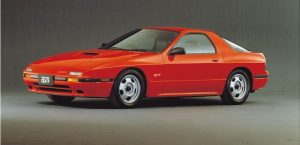
Suspension
One of the FC RX-7’s party pieces is its suspension. The previous SA22 had a bit of a reputation for oversteer, so to address that, Mazda fitted the FC with independent rear suspension rather than the live axle found on the first-gen car. What’s more, the FC makes use of Mazda’s DTSS (Dynamic Tracking Suspension System), which adjusts the toe angle at each wheel depending on cornering force.
The intention was to improve stability, though as a knock-on effect, it does reduce the amount of feel and feedback sent back to the driver. That’s far from ideal when you’re on a spirited touge run, or taking the car drifting, so plenty of owners will have opted for a DTSS eliminator kit by now. This involves replacing the flexible standard bushings with rigid alternatives, ensuring that the toe angle remains consistent. There’s nothing wrong with this, but it’s worth inspecting so that you know what you’re dealing with.
Similarly, AAS (Auto Adjusting Suspension) was another new feature on the FC which got a mixed response. Effectively, this tech alters the damper settings in line with the road surface for an improved ride, but like DTSS, it also numbs the experience. Again, this speaks to Mazda’s intentions of making the FC more of a sports tourer than an all-out sports car.
Naturally, this means that the car responds very well to performance-oriented suspension upgrades, so don’t be surprised if the example you’re looking at has received plenty of aftermarket attention. Just make sure that quality parts from reputable brands have been used.
Brakes
As for the brakes, vented rotors were standard all-round on the Mazda RX-7 FC, with the turbocharged variants benefitting from four-piston calipers at the front. These will almost certainly have needed replacing somewhere along the line since the late eighties, so consult the car’s history pack to figure out when this took place.
Despite their age, the standard brake rotor design still holds up well today. So, if it’s sporting a larger set, you can expect the car to have seen it’s fair share of high-intensity use.
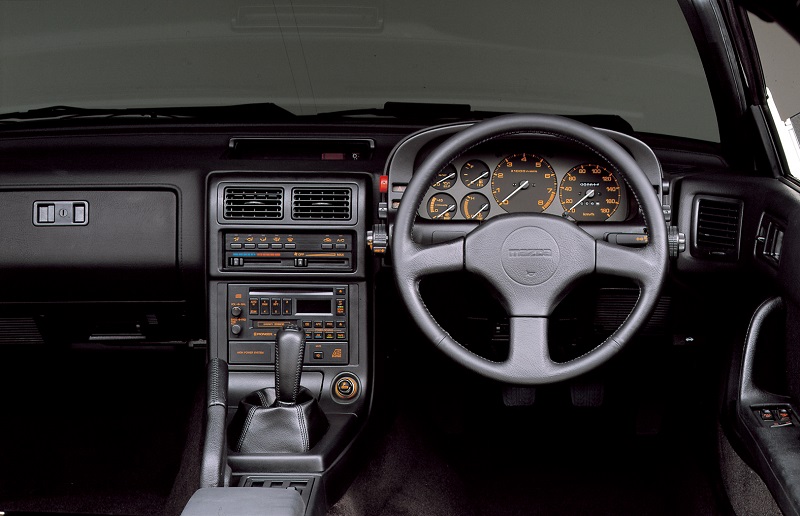
Interior
The interior of the Mazda RX-7 FC looks exactly as you would expect of a Japanese car from the eighties. There’s plenty of cheap plastics involved that are probably looking their age. Plus, as the materials are quite brittle, you might be looking at some broken switchgear. If the car in question was fitted with leather upholstery, that too is likely to be looking a bit worse for wear by now.
Electrics are another weak point. The solder used within the FC’s circuit boards was never of the highest quality, and as the decades have gone by there’s been many cases of it simply cracking. So, if you notice that the FC’s digital instruments or horn aren’t working, failed circuit boards are likely to be the issue.
Oh, and while you’re inside the car, see if you can look under the carpet in the back. This hidden area can contain all sorts of evidence about everything from crash damage to water leaks.

Exterior
Mazda paint from this era wasn’t exactly the best that the automotive industry had to offer, so expect it to be faded or peeling.
Beyond those visual defects, you’ll naturally want to check for structural corrosion too. A comprehensive glance over the chassis is recommended due to the harshness of road salt, but there’s also a few key problem spots to pay particular attention to.
Like many cars, the Mazda RX-7 FC’s sunroof can trap water in its sills, so make sure there’s no rust there otherwise fairly extensive roof repairs could be in order later down the line. Rainwater can also wreak havoc with the metal frame that surrounds the glass of the rear hatch, and the base of the antenna is prone to rusting as well.
Finally, aside from obvious zones like wheel arches, you should open up the bonnet and look down towards the front bumper. The reinforcing metals behind the bumper corrode for fun.
Most FC RX-7s will have undergone some sort of visual modification, so if it isn’t to your taste, be sure to factor in the cost of putting it right when haggling on price. Or, if you’re seeking inspiration for your own build, check out our best modified RX-7 feature cars.
Tech spec: Mazda RX-7 FC (Turbo Facelift)
Engine: 1308cc twin-rotor
Max Power: 200hp at 6500rpm
Max Torque: 195lb ft at 3500rpm
Transmission: five-speed manual
Max speed: 149mph
0-62mph: 6.7 seconds
Weight: 1293kg
Economy: 23mpg


